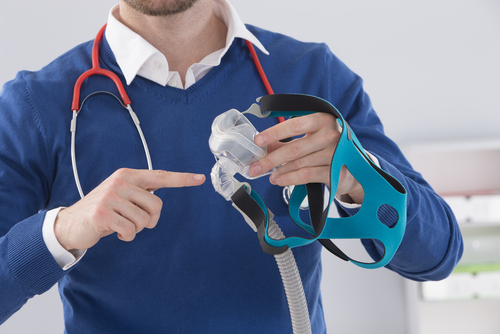Challenges, Benefits of Noninvasive Mechanical Ventilation for ALS Patients Reviewed in Study

Survival and quality of life of patients with more advanced amyotrophic lateral sclerosis (ALS) can be improved significantly with the use of noninvasive mechanical ventilation (NIV). But many factors can contribute to a delayed decision on when to start mechanical ventilation, as well as on the effectiveness of the intervention, according to a review study.
In the study, “Continuous noninvasive ventilation for respiratory failure in patients with amyotrophic lateral sclerosis: current perspectives,” Italian researchers reviewed some of the technical factors affecting the use of NIV and its overall impact on quality of life for ALS patients. The review was published in the journal Degenerative Neurological and Neuromuscular Disease.
ALS is characterized by the progressive degeneration and death of nerve cells that control muscle movement. In the early stages, the disease causes muscle weakness that, as it progresses, can lead to difficulties in speaking, swallowing, and eventually, breathing.
The occurrence of breathing complications or even respiratory failure can vary significantly among ALS patients, depending on the type of respiratory musculature impairment and coexistence of secondary respiratory diseases. In addition, the prognosis of an ALS patient following acute respiratory failure and intubation may not always be associated with complete ventilator dependence, and each case should be evaluated separately.
Management of this disease complication has changed significantly in recent years with the development of new commercially available portable ventilators that can be used both at the hospital and at home.
Still, the decision to start long-term mechanical ventilation can be affected by several factors, including the attitude of the treating physician, insurance coverage, cultural background of the physician, and what the patient and his or her family want.
A previous study has shown that the use of long-term ventilation varies quite drastically between countries due to different health policies. In Germany, it was used by 3% of the studied ALS population, whereas in Japan it was used by about 45% of patients. In contrast, in England, no patients were treated with long-term mechanical ventilation when home ventilation systems were not supported by national health insurance system.
Other factors that influence adherence to long-term mechanical ventilation are the age of the patients and the presence of family support. Those more willing to accept NIV or IMV therapy are younger and more motivated to explore all life-prolonging possibilities.
“In fact, the use of NIV and its outcome are heavily related to demographic and personal factors,” the researchers said.
In general, NIV use is associated with improved survival rates and better quality of life in ALS patients. When used for at least four consecutive hours during sleep, NIV can prevent sleep hypoxia (low oxygen levels) and improve sleep quality, as well as prevent hospitalizations.
Studies have shown that mortality rates are similar between patients who have undergone invasive mechanical ventilation (IMV) with tracheotomy, and patients who could be weaned from IMV to NIV. Still, a higher percentage of those weaned to NIV were discharged to go home, and most only required NIV during the night.
“These results have shown that many patients who can be successfully weaned to NIV have an overall survival comparable to that for patients starting NIV in an elective manner,” the researchers said.
One of the advantages of NIV is that the “patients can decide how to continue mechanical ventilation during the evolution of the disease,” according to the researchers. NIV requires fewer resources and is often better accepted by the patients because it gives them greater independence. It also can be more easily managed at the patient’s home than IMV.
“Most of the decisions about this topic are often taken in emergency situations and in the absence of anticipated directives,” the researchers said. In cases where the patient chooses continuous mechanical ventilation, they suggest that physicians should encourage patients to state their IMV limits with specific directives on their “preferences for long-term mechanical ventilation shutdown.”
Despite the various available possibilities, if the patient’s respiratory deficit is severe and NIV is ineffective, the only alternative to sustain life is invasive ventilation, according to the team.
“This condition can only be effectively supported by a multidisciplinary team of specialists who make decisions together with patients and caregivers, respecting the will and dignity of the person,” they conclude.






